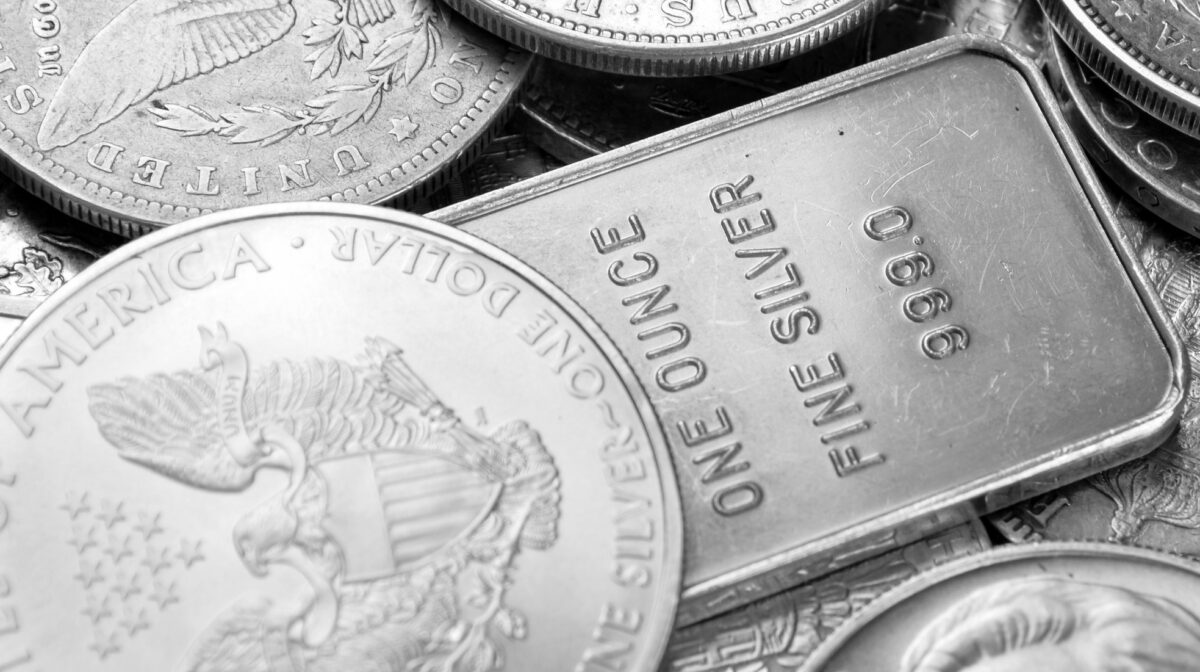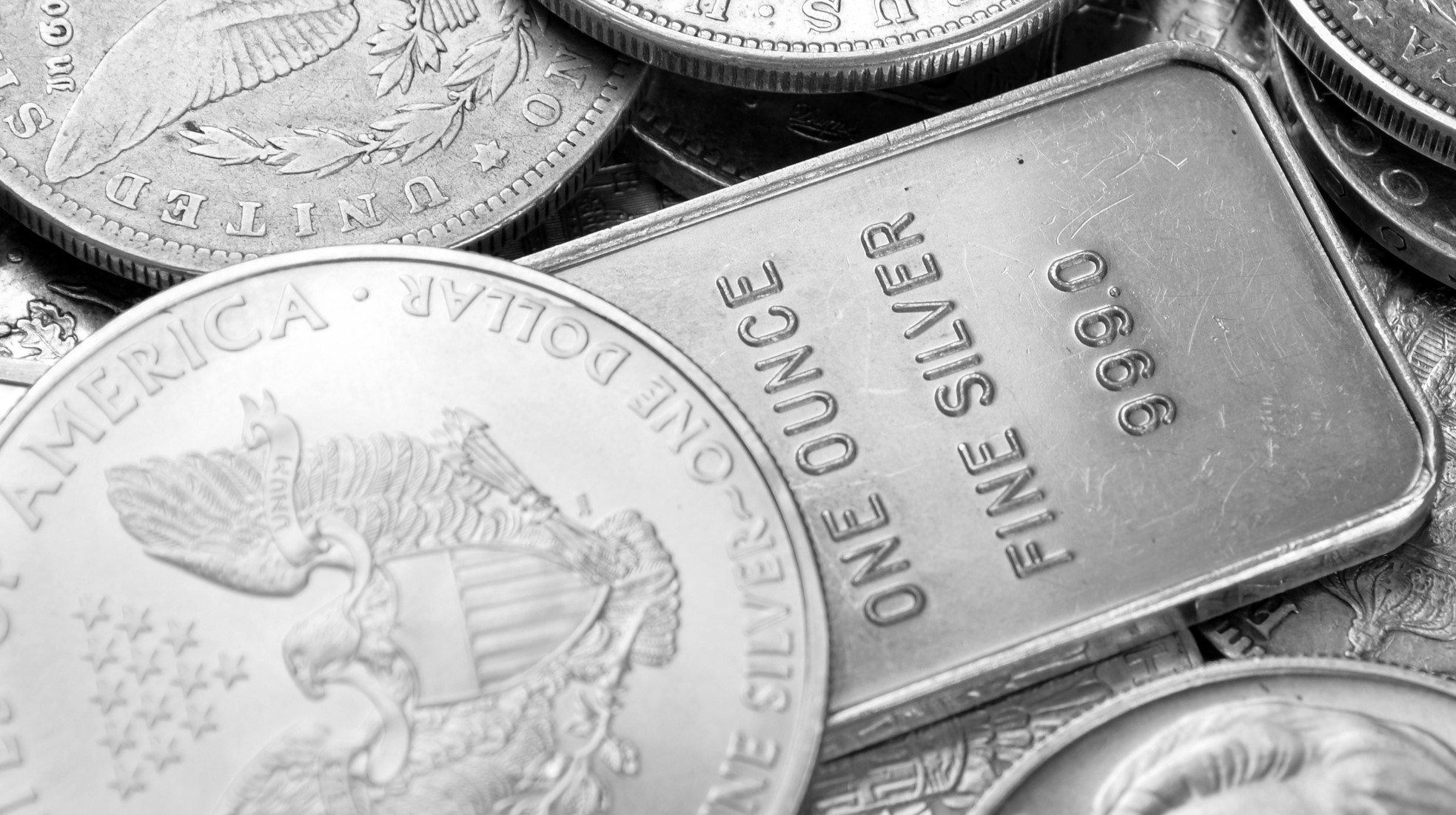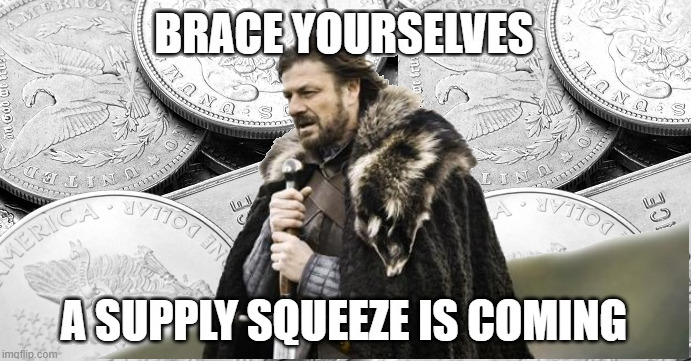My previous article, #silversqueeze and the trade of the century, lays out the ethical, value, supply-demand, and meme cases for investing in silver. If you’re convinced by that, some other, or your own analysis that the price of silver is going to go up, what’s the best way to play it?
All the disclaimers
The previous article I researched for weeks, to get a reasonable grasp of the basics of the precious metals market in general and the supply squeeze thesis for silver in particular. There was a ton of stuff that I discovered but couldn’t fit in that article. But this one I’m going to knock out as quickly as possible, so weight it accordingly. Note that you’ll need to do your own research (on everything, but especially) on the tax implications of each option; in general if you make a profit on something, the government wants a slice regardless of whether they helped or hindered. Also, note that it’s not saying what you should do, only what I think the factors are that affect the various options in general.
What are the options?
I’m going to discuss them in order from obvious to esoteric:
- Physical coins & bars
- Vaulted silver
- Kinesis.money
- Futures and options
- Exchange-traded funds (ETFs)
- Mining stocks
Physical coins & bars
The easiest and prettiest option. There’s a lot to like here: you get to see and hold your investment, after you’ve purchased you don’t have to pay anyone fees to hold it or create any records of it, and it’s simply real money. Silver is more affordable than gold. The bar to entry is low: you could start with just a few coins.
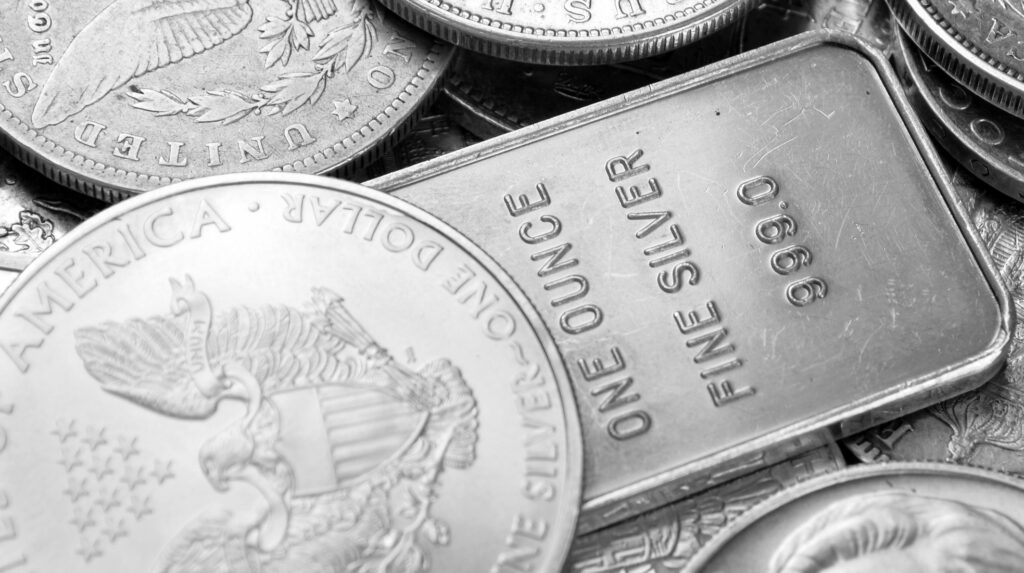
The profit potential on physical silver is high, as I spelled out previously. But you pay a premium over the spot price for having it in the form of investment-grade coins or bars in the first place. And although it should be easy enough to sell back to the dealers (that is their job), they take a chunk for their trouble, so you’ll get back less than you paid. Therefore, you want to hold it for some time, until it’s gone up significantly, to make it worth your while.
In some jurisdictions, silver coins that are also legal tender do not attract tax on the profit when you sell them, which is nice.
Zombie insurance
To buy physical silver is to opt out, as far such a thing is possible, of the centralised financial system. Gold and silver are, famously, the only financial assets that are not simultaneously someone else’s debt. Many people are attracted to them for such ideological reasons. Since real money will immediately come back into fashion in a real crisis, such as if the cash machine or credit card system is turned off, even temporarily, or in the case of extreme inflation, people who hold some themselves have traditionally been the same sort of people who own water filters and weapons. It’s not necessary, though, to be so extreme in order to appreciate having some sort of financial hard backup.
To be true zombie insurance, your metals must be accessible in a location that you control. A bank deposit box or safe will do you no good if they shut the banks.

However, most bullion dealers will advise against storing any large amount of gold or silver at your house, since it exposes you to the risk of burglary. Non-bank vaulting is an option if you buy significant amounts, and we’ll talk about that in a minute.
F*ck the law
Ownership of physical precious metals is overlooked by governments in good times, but has been a touchy subject when their policies have created havoc – which is precisely when you need them. Executive Order 6102 made it illegal for ordinary people to own gold or silver in America from 1933 to 1974. Failure to comply could result in ten years in prison – well into the highest sentencing zone in the current US justice system. The fact that keeping hold of your own legally-gained property could get you longer in jail than going out and punching an old lady gives you an insight into how seriously governments view any challenge to the fiat system.
However, I think it’s unlikely to happen again today for two reasons: Firstly, the dollar was tied to gold in 1933, so the only legal way to increase the money supply to attempt to fight the Great Depression was to get hold of more gold by defrauding Joe Public. These days they can print money with a keystroke and do not need gold at all. Likewise, in a financial crisis, they can legally (sic) “bail-in” your money directly from your bank account, and soon, from your Central Bank Digital Currency account, which is much more convenient and all-encompassing. Secondly, precious metals are now such a small market compared to the inflated fiat system that they hardly register at all. There could be no legitimate-sounding reason for confiscation in the modern day.
How to buy physical silver
In theory, it’s as easy to order silver coins online as it is to order shoes, or anything else. Right now, many dealers have sold out of investment-grade silver because it does contribute to the silver squeeze. But there is still some left at the time of writing.
Here are some tips:
- Buy coins or bars from major mints.
- The value is in the grade of silver (999 for investment) and the weight.
- Buy whatever is most liquid: national coins of a recent year, such as Eagles in the US, Brittanias in the UK, or whatever they use in Canadia. Bears eh.
- Don’t buy special coins like Disney or Star Wars.
- Keep it in perfect condition (don’t touch it with your bare fingers or it can tarnish).
- Keep proof of purchase.
Choose a reputable dealer, preferably one that has been around for some years. Check if they buy back silver and under what conditions. Here are a few links to get you started (no affiliation):
- America
- Europe
More information on buying and storing silver can be found on the excellent goldsilver.com website: https://goldsilver.com/learn/
Vaulted silver
Buying silver and then paying someone else to take care of it has many of the same attractions as holding it yourself. You’re essentially trading the risk of robbery for the risk of confiscation. You can reduce the risk of confiscation by choosing a bullion storage operation that is not part of the banking system, and one that’s in a stable foreign jurisdiction (or spread across more than one).
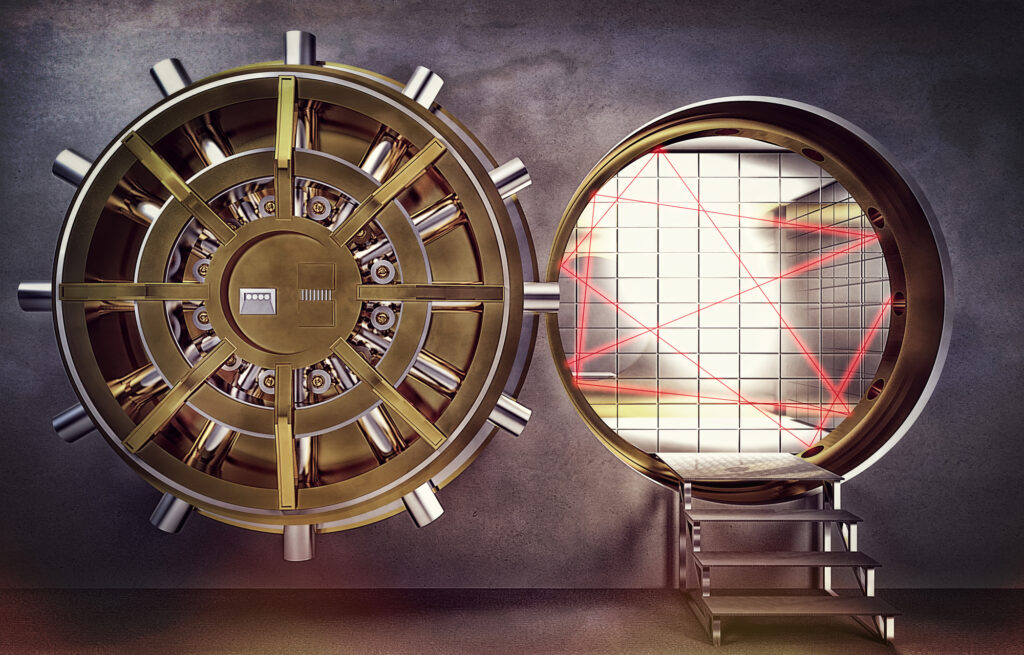
Many bullion dealers will have partnerships with storage operators, such that you can buy from their website and they take care of storage for you. The fees are reasonable, usually way below 1% per year, but there’s likely to be some minimum amount you need to store.
I don’t have any specific recommendations for companies, but just make sure that the solution is allocated. This means that a particular physical bar has your name on it, rather than you having a paper claim to “one of” the many bars in the vault. The latter, unallocated, storage is less secure because it’s a temptation to run a fractional reserve metals system.
Kinesis.money
There is a new type of vaulting option available, which is one where your ownership is recorded on the blockchain. This is likely to be a growth area. I’m only going to look at one option, Kinesis, because I have two reasons to believe it’s legit: it’s recommended by Gold Ventures, a Twitter account that is very well respected in the space, and it’s run by Andrew Maguire. A former commodities trader for Goldman Sachs, Andrew Maguire was a whistleblower about the (subsequently proven) criminal manipulation of the precious metals market by JP Morgan and others. He was targeted in a strange hit-and-run hours after testifying to the CFTC, but went on to complete giving his evidence despite the danger to himself and his family. He is therefore on the Light Side of the Force.
Silver on the blockchain
The Kinesis system runs on two cryptocurrency tokens, KAG and KAU, which represent legal ownership of one ounce of silver and one gram of gold respectively. To get started, you have three options:
- Buy the tokens directly, in any amount, using fiat or crypto to pay for them.
- Transfer your existing gold or silver from an approved bullion storage facility into theirs.
- Buy multiples of 100 KAU or 200 KAG tokens at once. When you do this, Kinesis goes out and sources the metals for you to match the tokens.
The first option means there’s almost no barrier to entry. You can register without identification to do this.
Options 1 and 2 are collectively called “minting”, because you mint, or create, tokens in a 1:1 relationship to the metal. They like you to do it this way because the end result is bringing more metal into the system.
Spend your silver with a debit card
What’s the point of putting your ownership on the blockchain? You can then manipulate the digital silver. For example, you can have fractional ownership. You can buy, sell, and transfer fractions of a KAG token. You can trade in and out between fiat, crypto, and silver and gold seamlessly and with very low fees. You can also send KAG to other Kinesis users anywhere.
But most excitingly, you can use the Kinesis debit card to spend your tokens on things just like regular fiat currency. It’s not 100% fluid; you have to sell a chunk into fiat on their website or app and then preload the card before you can spend on it. But it’s a damn sight more convenient than couriering some coins to a dealer, waiting to get paid, and then using your normal bank card. And it’s much better value. You’re losing a significant amount of money at every step of the process to try to spend your physical silver, as long as everywhere pretty much only accepts fiat currency. And you’d have to spend physical silver in exact multiples of ounces.
Buy and hold
If you’re not interested in spending silver, but just want somewhere safe to store it, Kinesis is still a great solution, because they have zero storage fees. Their model of charging small fees for transactions actually covers the cost of storage – and the storage is fully insured and audited. The third-party risk is less than an ETF, CFD, or futures contract because you’re not depending on the ability of an over-leveraged institution to source your metal from the open market when you want it. You can redeem your tokens and get your metal out at any time, because it’s actually there, backed 1:1.
Introducing yield
A common complaint against gold as an investment is that it doesn’t have any yield. Unlike holding someone else’s debt as an investment, like bonds, CDs, or stocks, there’s no income, no interest. With Kinesis, this is not true any more. A percentage of the transaction fees charged when users exchange or spend tokens are re-allocated to those who mint, hold, or spend tokens. This means even if you do nothing but use it as an alternative bullion storage, you still get some small amount of interest, paid in gold or silver, each month.
New paradigm
Kinesis are targetting not just retail, but institutions and even governments. The aim is to reintroduce hard money to the world, combining the oldest money, gold and silver, with the newest, cryptocurrency, to form a new monetary system.
Get some
I was impressed enough by this option to sign up. If you want to use it, consider supporting me and all this free writing what I’m doing by using my referral link: https://kms.kinesis.money/signup?referrer=KM13492542
Futures and options
You could buy a call option on the future price of silver, giving you the option to buy later at today’s prices. In theory this is a great idea because we expect the price to go up, and the cost of the option itself is relatively small, giving you some leverage. In practice, there are many factors that go into pricing options, and it gave me a headache. If you are smarter or more persistent than me, go ahead and try to figure it out. Also, options expire, so you have to get both the price and the timing right. Options, in my opinion, are for pros.
You could trade on futures contracts, for example, you could buy a silver futures contract that expires in March 2022 for a mere $27 today, and profit from the difference if it goes significantly higher at any time in the meantime. Futures also allow leverage, but if you use leverage, you’re vulnerable to getting liquidated by price manipulation. If you don’t use leverage, why not just buy physical? Although there are ways around it with synthetic tokens, the real futures exchange contracts are too large for most retail traders to even consider, in any case.
Lastly, not only are derivatives of all kinds firmly in the traditional financial system, and thus vulnerable to exactly the kind of crisis that precious metals are supposed to protect you against, but trading under-collateralised paper silver goes very much against the spirit of the silver squeeze.
Exchange-traded funds (ETFs)
The advantage of buying shares in a fund that tracks the price of silver instead of the metal itself is storage and liquidity; some institutions also have legal clauses that they are only allowed to trade securities. There are many ETFs with exposure to silver, but here I’ll just look at the two most talked about: iShares Silver Trust ($SLV), and the Sprott Physical Silver Trust ($PSLV).
The bar to entry of the ETFs themselves is pretty low: one share of $PSLV costs a little under ten dollars today. You do have to contend with whatever fees or minimums your broker throws your way though.
ETFs, like futures, are also paper silver, but here there is a crucial difference. ETFs are required to fully back their shares with actual silver. Now, it is widely, widely alleged that SLV does not in fact do this, and fudges their audits. I’m not saying that Blackrock allowing the convicted metals manipulators JP Morgan to be the custodian of the fund is like letting your crackhead uncle Jerry look after the kids’ piggy banks, but others might. Put Piggles down, Jerry.
In PSLV, in contrast to SLV, metals are fully allocated. It’s run by Eric Sprott, legendary precious metals investor, who has been an outspoken critic of the manipulation of the precious metals price.
Buying SLV is a mug’s game. But buying PSLV is a valid alternative to buying physical silver. In terms of the #silversqueeze, if enough people buy into his fund, Eric could “drain the swamp” on his own. May the saints preserve Eric from the wrath of the banks.
Mining stocks
Saved the best till last. Under normal circumstances, no-one in their right mind would recommend mining shares as an investment. They are a nightmare – allegedly just as manipulated as the metals. Evaluating their fundamentals is an expert task and a necessary one: smaller miners or explorers can easily go out of business. And the price charts are volatile, moving as much as 30% up or down in a single day.
Interesting times
So why even consider it? Because these are not normal circumstances. We are, I submit to you, at the beginning of not only a commodities supercycle in general but a precious metals bull market in particular. None of the usual reasons to be wary of miners apply: Manipulation of shares will not matter – or perhaps even be possible – when the silver price escapes its own manipulation. The details of fundamentals of a company, while relatively important when composing a portfolio, aren’t absolutely important when a rising tide floats all ships. Price volatility is less important in the context of large, multi-month moves. Accept that you will never buy at the absolute bottom and sell at the absolute top and such swings become less relevant.
If you trade using leverage, not only do you have to be right, but you also have to never be too wrong, otherwise you have to bail out as the price goes against you or lose everything. But for non-leveraged plays in miners, assuming an investing horizon of somewhere between 1 and 10 years (I don’t know how long the bull market will last; might write something later), you don’t care if the nominal value of your investment goes down in the beginning or in the middle, because there is no danger of liquidation and you’re sure in the end it will be up.
Leverage without leverage
The same could be said of buying physical silver. So why consider miners at all? Apart from the fact that mining shares do have yield – cash-rich companies pay dividends – it’s because their business model, profitability, and therefore share price, is leveraged to the price of the underlying, in this case silver.
Let’s say the All-In Sustaining Costs (AISC) of a miner is $20/oz, and the price is $30/oz. They make a profit of $10/oz. Now let’s say the price of silver doubles to $60/oz. The profits do not change in the same ratio. They’re now $40/oz, which is quadruple what it was. As a quick and dirty rule, the share price of miners moves about 2-3x the change in metal prices.
As @Galactic_Trader, a former Merrill Lynch trader, put it, miners are an option on silver that doesn’t expire. You get leverage without liquidation or expiration. The only caveat is that this only makes sense in bull markets, which only come around once every few decades, and for which most ordinary people aren’t even looking out. If you’re not sure that we’re on the verge of a bull market, check out my previous article.
Of Majors and Juniors
You can classify mining companies that are actually producing metals into Major, Mid-tier and Junior producers. Then there are the companies that are trying to develop mines, or looking for deposits in the ground, but not yet producing much, if anything. These are Explorers (they also technically belong to the Junior class because of their size). You could further divide Explorers into Near-Term Producers, Late-Stage Development, Early-Stage Explorers, and the most speculative, Project Generators.
Under normal circumstances, you would buy Majors, because they’re safer. Juniors and Explorers would be too risky. But to buy and hold through a bull market, arguably the opposite logic applies. The share price of an already profitable company is valued accordingly – that is, it’s already high. The share price of a company that is breaking even, burning its cash reserves, or that is purely speculative is also priced accordingly – that is, low. A large company with a low AISC benefits in profitability from increased metal prices, but not nearly as much, relatively, as one which was struggling to be profitable before the increase. In other words, while a rising tide does float all boats, it floats the smaller and (previously) riskier ones much faster.
Consider also that most institutions can’t even buy junior miners because the capitalisation is too small. When Warren Buffett wanted some exposure to gold, he bought Barrick Gold, which has a market cap of $44 billion, and could absorb that level of investment. The average market cap of a silver explorer is (by eye) in the order of $50 million, or a thousand times smaller. Institutions might be able to buy an ETF like SILJ, the ETFMG Prime Junior Silver Miners ETF, especially in the later stages, as the market cap gets much bigger. By contrast, buying individual junior miners, especially explorers, is truly a play “reserved” for everyday people. Everyday people with balls, that is.
What about the squeeze?
There is an argument (which I’m not sure I believe) that buying and holding shares of First Majestic $AG could cause a newsworthy squeeze of its own, as that stock is heavily shorted, but in general terms, buying mining companies does not contribute to the #silversqueeze. So if you care about that, get your fill of physical, vaulted silver, or $PSLV first.
Sovereignty
Smarter people than me have noted that stocks tend not to be targets for government confiscation, unlike cash and cash equivalents. This makes sense for two reasons: Governments don’t want to be unloading tons of shares in the open market when what they actually need is cash to fill the holes in their budgets. And the political class are themselves likely to be holding their own wealth in the form of financial instruments like equities. Is there a risk to holding shares if the financial system itself collapses? Yes, if it were severe enough, but then nothing short of hard assets is any use in that situation: physical precious metals, productive land, hand tools, that kind of thing. If, as I expect will happen, a massive global liquidity crisis occurs and banks and businesses go bankrupt I’m not sure that that would affect your share ownership. As long as a stock exchange was rebooted at some point you would then be able to trade.
Which stocks?
I can’t recommend particular stocks because I’m not a financial adviser. Specialist services that do so cost hundreds or thousands of dollars. But I can talk freely about the kinds of things that I’m considering and why.
Note: There are special risks associated with mining stocks, such as the threat of nationalisation or punishing tax changes. Jurisdiction matters. Do your due diligence or follow someone who does.
If I were to buy only one stock, it would be First Majestic $AG. It is a Major producer focussed on silver (which has more profit potential than gold), with record cash as of end 2020. More importantly, to me, it’s run by Keith Neumayer, who is an ally in the fight against silver shorting. His stock is itself shorted by the big banks, so there’s an ethical component in supporting them. Incidentally, if you think mining per se is unethical because of the environmental impact, I get it, but then throw away your mobile phone, which uses silver, cycle everywhere because cars also use silver, and go turn off your PC, tablet, and Internet router. Ok now those people are gone let’s continue.
If I were to invest in more than one stock, it would be a diversified (because one company can still go under, be nationalised, or screw up somehow) basket of Juniors.
UPDATE: I’ve removed the list of mining stocks. You can see the personal investment portfolio of Gold Ventures online. I also recommend SilverChartist, whose paid group I joined, and who also gives free advice on Twitter.
How to buy mining stocks
I don’t have time to do a broker-by-broker review, and I wouldn’t trust any that I found online anyway. I’m looking at Interactive Brokers (no affiliation) because they are good enough. Small mining stocks are not that easy to find on most brokers, but Interactive Brokers includes stocks on the Toronto Stock Exchange, and has a lot of juniors and explorers. Their fees are much lower than Interactive Investor, which is the company I mentioned in previous versions of this article.
Wen moon?
Some people have told me that they don’t want to buy silver just yet because the price isn’t doing much. Unfortunately, some people will then resist buying when the price shoots up because it’s now “too expensive”. How long do we have while silver and miners are cheap? Probably not very long.
The paper silver racket that I described in my previous article I think will unwind this year, but when? According to Andrew Maguire, “The first stage of a price reset must begin to unfold a little ahead of the June 28th (2021) Basel III deadline.”
The Basel III regulations are very interesting (as interesting as banking regulations can get, anyway) because they raise the status of gold from a Tier 3 to a Tier 1 asset. This means that banks can now count gold as a proper reserve asset again, on the same level of trust as Treasury bonds. In essence, after decades of being ignored, gold is back in a pseudo- (for now) monetary role. This change will mean that real gold is four times as valuable in terms of banks’ capital requirements as paper gold. This will put a big squeeze on the unallocated (fraudulent paper) gold market, and could start a move towards re-physicalisation of the gold market in general, which will have cascading effects for the gold and silver price. For those that started to nod off at “regulations”, just remember: it’ll probably kick off in the early summer, if not before.
UPDATE: In the summer of 2021, some banks managed to weasel out of their Basel III obligations, and the market is still heavily suppressed. This changes nothing fundamentally, except the day of reckoning has been postponed a little. In a way this is good, because it gives more ordinary people a chance to obtain some real, physical money.
So, don’t delay. Get positioned now for the next big change in global markets.
🌍 Share this:
Want more to read? Here are my latest articles:

